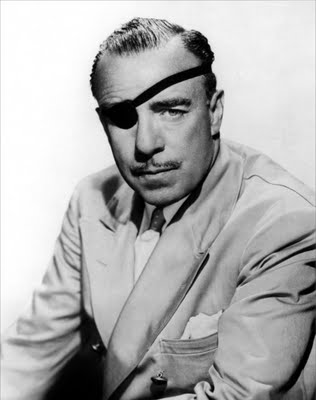<?xml:namespace prefix = o ns = “urn:schemas-microsoft-com:office:office” /> (March 11, 1887 – December 31, 1980)

Raoul Walsh was an American film director, actor, founding member of the <?xml:namespace prefix = st1 ns = “urn:schemas-microsoft-com:office:smarttags” />Academy of Motion Picture Arts and Sciences (AMPAS) and the brother of silent screen actor George Walsh.
Walsh began as a stage actor in New York City, quickly progressing into film acting. Walsh was educated at Seton Hall College and began acting in 1909. In 1914, he became an assistant to D.W. Griffith and made his first full-length feature film “The Life of General Villa”, followed by the critically acclaimed Regeneration in 1915, possibly the earliest gangster film. Walsh played John Wilkes Booth in D.W. Griffith's epic ”The Birth of a Nation” (1915) for which he was also Assistant Director. Walsh later directed The Thief of Bagdad (1924), starring Douglas Fairbanks.
In the early days of sound with 20 Century Fox, Walsh directed the first widescreen spectacle, The Big Trail (1930), shot on location across the West. It starred then unknown John Wayne, whom Walsh discovered as prop boy by the name of Marion Morrison and renamed him after General Mad Anthony Wayne (Walsh happened to be reading a book about General Wayne at the time).
An undistinguished period followed with Paramount Pictures from 1935 to 1939, but Walsh's career rose to new heights soon after moving to Warner Brothers, making movies with Hollywood’s Greatest including Errol Flynn. He made the following movies with Errol Flynn – “They Died with Their Boots On” (1941) “Desperate Journey” (1942), “Gentleman Jim” (1942), “Northern Pursuit” (1943), “Objective Burma” (1945), “Silver River” (1948) and “Montana” (1950).
Walsh's contract at Warner Brothers expired in 1953 and made many more movies for various studios until his retirement in 1964.
Trivia:
Walsh was set to direct and star in “In Old Arizona” in 1929, but had to abandon the project when a jackrabbit jumped through the windshield of a car he was driving which cost Walsh an eye.
After losing his eye, his doctor reportedly asked if he'd like an artificial (glass) one. “Hell, no,” Walsh snapped. “Every time I'd get in a fight, I'd have to put it in my pocket.” He wore an eye patch for the rest of his life.
There are echoes in Walsh's films of events from his own life and that of his family. In “They Died with Their Boots On” (1941) there is an actor playing a bit part as a tailor to the US cavalry officers that might have been a reference to Walsh's father who made uniforms for General Custer and other high-ranking officers before becoming chief designer for Brooks Brothers in New York.
Like his contemporary Howard Hawks, Walsh was known for never letting the facts get in the way of a good story. According to Walsh, in 1942, a few days after John Barrymore had died, Walsh, as a practical joker, picked up Barrymore's body from the mortuary and managed to sit the body, clad in a business suit, in a chair in Errol Flynn's house just before Errol was due to arrive home. The artist Gene Fowler, a friend to both Barrymore and Flynn, disputed this story — recounted by both Flynn and Walsh in their autobiographies. Fowler states in his autobiography that he spent much of the night during which the joke was supposed to have occurred sitting with Barrymore's body in a Hollywood funeral home.
— Tina
